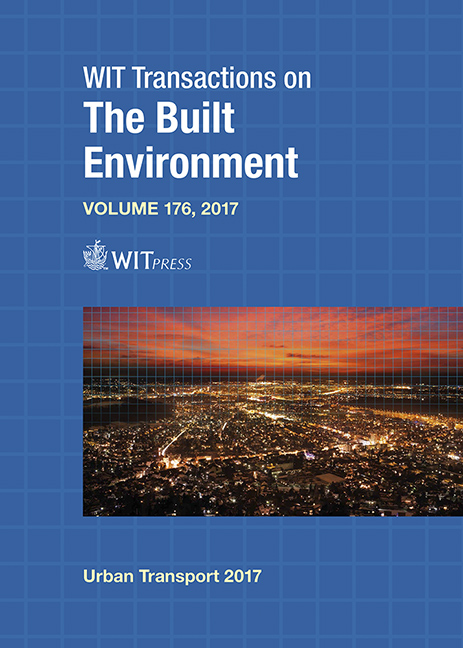WEAR RATES IN URBAN RAIL SYSTEMS
Price
Free (open access)
Transaction
Volume
176
Pages
11
Page Range
559 - 569
Published
2017
Size
615 kb
Paper DOI
10.2495/UT170481
Copyright
WIT Press
Author(s)
RICCARDO LICCIARDELLO, GABRIELE MALAVASI, STEFANO RICCI, PIETRO VITALI
Abstract
A significant part of maintenance costs in urban rail systems (metro, tram, light rapid transit/light metro) is due to wheel-rail wear. Wear rates; measured for example as depth of wear per kilometre run (rolling stock) or per train passage (rails) depend in a complex manner on several influence factors. Among the most important are key design factors of the rolling stock (wheel profiles, suspension characteristics), of the track (distribution of curve radii, characteristics of switches and crossings, rail profiles), of the wheel-rail interface (lubrication, materials in contact, ambient characteristics), and of operations (frequency of traction and braking, trainset inversion policy, maintenance policy etc.). When designing an urban rail system, all of these factors have to be under control in order to limit the costs due to wheel/rail reprofiling/grinding and replacement. The state of the art allows the calculation of wear rates given quantitative input regarding the above factors. However, it is difficult to find in the literature experimental values for calibration of wear models and indications on what is a reasonable state of the art wear rate for any given type of urban rail system. In this paper we present a structured analysis of flange wear rates found in the literature and derived from the experience of the authors, for a variety of cases, including metros and mainline rail systems. We compare the wear rates and explain their relationship with the influence factors. We then relate the wear rates with the needs in terms of wheel reprofiling/replacement. We estimate ranges for the calibration coefficients of wear models. We present the results in a way as to allow the designer of urban rail systems to derive values for target wear rates according to their specific conditions without the need for complex simulations.
Keywords
urban railway, wheels, rails, wear, metro, tram





